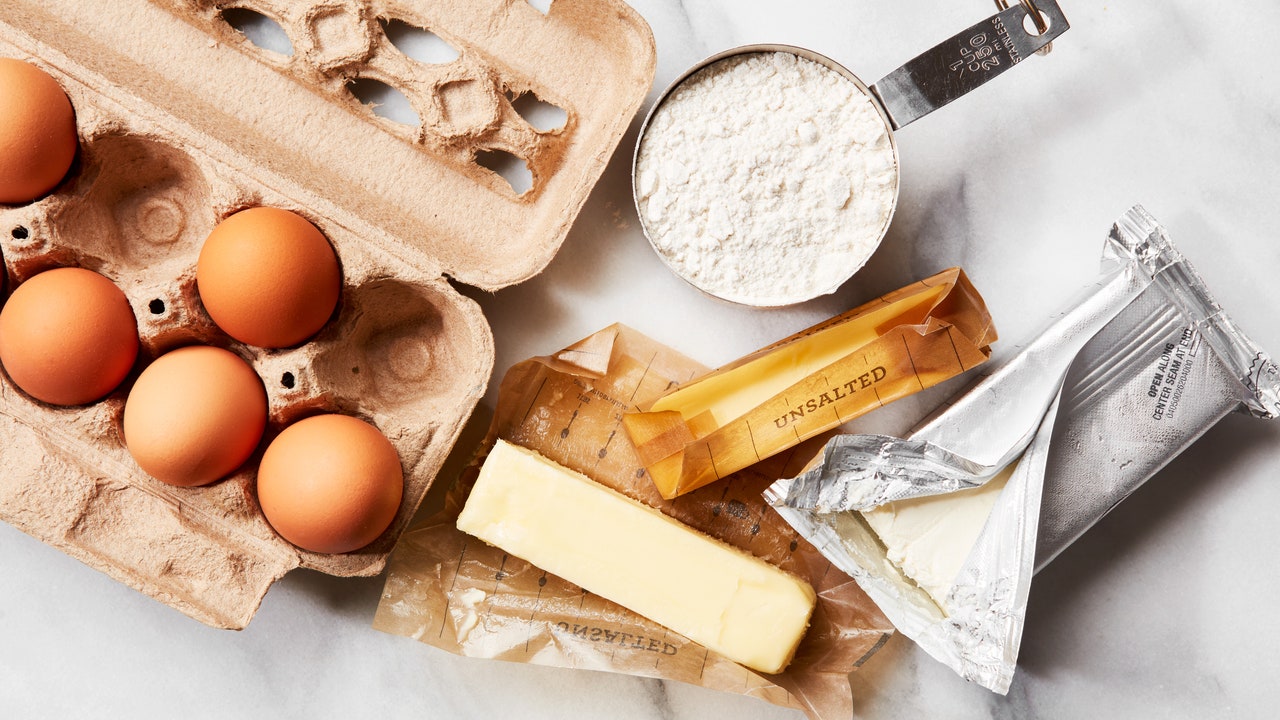You’ve probably come across it countless times in recipes: One egg, at room temperature. Two sticks of butter, at room temperature. But what exactly does "room temperature" mean?
Surprisingly, "room temperature" is a relative term in recipes because the temperature in my kitchen may not be the same as yours. In essence, "room temperature" simply means a temperature that is not as cold as in the refrigerator. Refrigerators, a modern convenience, were not always around. Before the invention of refrigerators in the 19th century, most foods were stored at ambient or cellar temperatures, not the cold mid-30 degrees found in fridges today. With the widespread use of refrigerators in American kitchens by the 1950s, ingredients like butter and eggs that were previously kept at room temperature became staples in the refrigerator. As a result, cookbooks started referencing "room temperature" more often to distinguish from refrigerator temperature.
Defining "Room Temperature"
"Room temperature" does not denote a specific temperature or a universally agreed-upon range. Indoor temperatures vary across different regions, but generally, "room temperature" refers to the comfortable temperature range we maintain in our homes.
In the late 1960s, Danish scientist Povl Ole Fanger conducted research on thermal comfort to determine the optimal indoor temperature for the human body based on various factors. His work significantly influenced HVAC design and international standards for indoor air temperature. Typically, indoor temperatures in the Western world range from 68 to 74 degrees Fahrenheit, with variations based on geography, season, sex, and age.
When it comes to cooking, ensuring ingredients are at room temperature matters for several reasons. It allows cold ingredients to mix evenly with others, helps pans retain heat, and promotes even cooking. However, achieving the right temperature for ingredients can be a challenge due to the subjective nature of "room temperature."
The Impact of Temperature on Cooking
Temperature plays a crucial role in emulsions like vinaigrettes and mayonnaise, which are inherently unstable. Emulsions consist of two incompatible liquids, such as oil and water, dispersed throughout each other. At room temperature, these ingredients are more fluid, making it easier to blend them evenly. Cold liquids can be thicker and resistant to blending, while warm liquids may cause emulsions to break.
Temperature also affects baking, particularly cake batters that start as emulsions. Achieving the right temperature for ingredients ensures a smooth blending process and a light, airy texture in the final product.
The Role of Room Temperature in Bread Making
In bread making, temperature is considered an essential ingredient. The ideal temperature for yeasted dough, known as Desired Dough Temperature (DDT), ranges from 75 to 78 degrees Fahrenheit. Room temperature influences the initial temperature of the dough and plays a significant role in the fermentation process.
Quick Tips for Warming Ingredients
If you need to quickly bring ingredients to room temperature for a recipe, there are a few tricks you can try. For liquids like milk or eggs, place them in warm water to speed up the warming process. For solid ingredients like butter, gently warm them in the microwave in short bursts to avoid melting.
Having a reliable thermometer on hand can help you understand how temperature impacts the cooking process, regardless of the definition of "room temperature" in your location.
